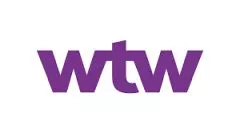The future is electric. Demands on transmission networks will continue to grow exponentially, as will investment and the interconnectivity between networks. Modern, flexible, reliable and resilient transmission networks are fundamental to the success of the energy transition, and within a regulated sector with fixed revenues, finding ways to build operational efficiencies will be a focus for risk and finance leaders.
But making strides in the energy transition comes with its challenges for transmission system operators (TSOs):
- While the existing power grid is based around centralized and large-scale power plants, solar, wind, and hydroelectric power are pushing generation assets further from load centers. Pushing into new regions with limited transmission infrastructure has the potential to create transmission bottlenecks.
- The increasing reliance on intermittent, weatherdependent sources of power is demanding more flexible grids and optimization of operating systems.
- As consumers and businesses move towards greater electrification, behind-the-meter technologies such as electrified heating systems, electric vehicles and operational plants will create demand shifts. While this has the potential to create supply challenges as TSOs battle supply and demand variability, in practice, the real benefits of new technologies, such as the ability to charge during non-peak periods, should create opportunities for TSOs.
- To create the foundation for the power system of the future, TSOs must invest heavily in their networks in terms of upgrades, extensions and interconnection. But with all TSOs facing the same challenges at the same time, demand is outstripping supply and inevitably supply-chain issues are ensuing, which have the potential to hold back project timelines, limit the purchasing power that TSOs may have had in the past and drive costs.
TSOs are largely risk resilient and are making strides in embracing electrification and investing in growing their networks. TSOs are at the core of the global drive to carbon-neutral economies, and meeting regulatory targets that ensure they deliver on this while running a business efficiently will be a managerial imperative.
Risk management is prime for optimization
As TSOs look ahead to a 5-10-year timeline, risk management and risk financing strategies need to accommodate the changing exposures and pressures on this trajectory. Risk leaders need to identify where more value can be derived for the dollars spent. This will require sustainable plans that evolve with time, identifying more opportunities to reduce the total cost of risk (TCOR) and build resilience into risk financing programs.
In shifting the needle, there's no one-size-fits-all for TSOs. The standard of risk management across the sub-sector is generally sophisticated and leaders thoroughly know their own business and how to manage their construction and operational risks. But as pressures evolve and companies expand their networks across onshore and offshore, the market has not yet There's a lot of value at stake and markets struggle to find a rate that makes sense for both onshore and offshore risks. The market will usually compensate with pricing that's more expensive than the risks warrant in isolation, meaning risk transfer can represent poor value if not approached strategically. It's a question: at what point does it make sense to have a standalone option for offshore risks rather than continuing to bolt on to onshore programs? While there's no general rule in splitting a combined program into onshore and offshore risks, a line can be drawn when you dig into the data for a company's unique risk profile. There will be a tipping point when it comes to limits vs losses, which should be considered against market trends. Transmission and distribution companies need to find a strategy that addresses this and reassure themselves that they make optimal decisions. found an equitable basis to rate or even accommodate onshore and offshore together. Onshore and offshore transmission operations have different risks with different exposures and different loss values occurring at different frequencies — creating distinct risk management challenges. These differences can be at opposite ends of a spectrum, effectively compounding costs on combined programs. The differences in insurance capacity sources between on and offshore markets further compounds the challenges.
Combined programs can only go so far as different exposures, limits and losses all combine to drive a wedge between onshore and offshore property markets trends.
TSOs (particularly offshore) have been subject to rate hikes. Onshore rates have approximately doubled, but during the last decade, offshore rates have seen a rapid hardening of the market, in terms of policy coverage restrictions and rates having more than tripled.
Onshore market trends |
Offshore market trends |
| "TSO risks are good for the market. TSOs have widely
distributed assets with a low concentration of value that's
typically well protected and resilient to catastrophe-related
exposures. Its critical national infrastructure and the networks
are well monitored with predictive risk management and monitoring
of the condition of the assets, and steady revenue streams to
maintain, replace and enhance the assets." Carlos Wilkinson,
GB Head of Power & Utilities, Downstream Natural Resources,
WTW When looking ahead, the main challenge for onshore TSOs will be to achieve the optimal balance between risk retention and transfer to make savings. |
"The subsea cable market is softening, driven by improving
loss ratios for underwriters who are now returning to profitable
results and capacity being attracted to the market as renewable
energy underwriters become more familiar with cable exposures and
upstream energy underwriters transition from offshore oil and gas
to offshore cables. Technological advancements are being made in the cable space and the markets are now becoming more comfortable in accepting these advancements and pricing accordingly. Appetite is stronger for operational risks, but new capacity is also entering the market for construction risks where coverage is broadening and rates are coming down 10-15% compared to this time last year." Thomas Mallindine, Head of Energy Transition and Development, Natural Resources Global Line of Business, WTW Offshore risk managers have an opportunity to quantify their risk more analytically. When order books are stressed, understanding loss scenarios for each project can help risk leaders make informed decisions about where to spend more strategically. |
It's a question: at what point does it make sense to
have a standalone option for offshore risks rather than continuing
to bolt on to onshore programs? While there's no general rule
in splitting a combined program into onshore and offshore risks, a
line can be drawn when you dig into the data for a company's
unique risk profile.
Carlos Wilkinson
GB Head of Power & Utilities, Downstream Natural Resources,
WTW
There's a lot of value at stake and markets struggle to find a rate that makes sense for both onshore and offshore risks. The market will usually compensate with pricing that's more expensive than the risks warrant in isolation, meaning risk transfer can represent poor value if not approached strategically.
It's a question: at what point does it make sense to have a standalone option for offshore risks rather than continuing to bolt on to onshore programs? While there's no general rule in splitting a combined program into onshore and offshore risks, a line can be drawn when you dig into the data for a company's unique risk profile. There will be a tipping point when it comes to limits vs losses, which should be considered against market trends. Transmission and distribution companies need to find a strategy that addresses this and reassure themselves that they make optimal decisions.
Cut through 59,049 options to optimize your risk strategy
It's not unusual for companies in the natural resources industry to take ten risks to the insurance market, but in an event where there are three risk transfer options for each, decision-makers are faced with 59,049 possible options.
By first establishing a risk tolerance, then modeling possible scenarios to understand their operational and financial impacts, and overlaying insurance structures on the simulated loss expectancies, TSOs can pinpoint where it is best to retain or transfer risk, and at which point to split onshore and offshore risks from a combined program.
Considering the portfolio of risks as a whole means risk and finance leaders can think in terms of the total 'premium dollars' to spend across the entire portfolio, rather than for each insurance tower. This shift enables risk leaders to prioritize purchasing insurance for those classes of risk where insurers are offering good value for money, while retaining risk where markets are more expensive or unable to support.
Sophisticated applications, such as Connected Risk Intelligence, model each individual risk and then generate a selection of portfolio-based optimal options. This band creates an 'efficient frontier' of optimized options, enabling TSO risk leaders to balance their risk and insurance spend with their risk tolerance.
The time is ripe to build retentions
To step up, TSOs need to understand and explore the range of products available to establish and grow retentions at an economical cost.
Wherever TSOs are in developing their risk retention strategy, alternative risk transfer solutions can be tailored to establish and grow retention mechanisms to support the business and reduce the TCOR. Alternative risk transfer can be used to allow TSOs to grow their risk retention over years using a stable capital model, that could ultimately assist in establishing a captive, without the strain of a substantial upfront capital reserve. Under this structure, insurers can agree to provide a payout that matches the sum of capital retained; this would only be unlocked in the event of a loss. This security enables TSOs to build retention funds gradually over time without denting the capital strength of the business in the short term.
For TSOs with established retentions, optimization will be critical to ensure the retention vehicle is providing the level of security and capital efficiency compared to ever-changing insurance market trends. In a sector that is evolving at speed, risk retention and transfer strategies need to keep pace.
Looking ahead
The transmission sector hasn't always been the first port of call for insurers when growing business, but TSOs are well risk managed and present an opportunity to grow revenue with a comparatively lower risk profile compared to larger power generation accounts. As power property insurance markets begin to soften, the outlook is brighter for TSOs than in recent years. Against this backdrop, making strides to optimize risk retention and transfer will position TSOs to take full advantage of opportunities as electrification gathers momentum.
The content of this article is intended to provide a general guide to the subject matter. Specialist advice should be sought about your specific circumstances.



